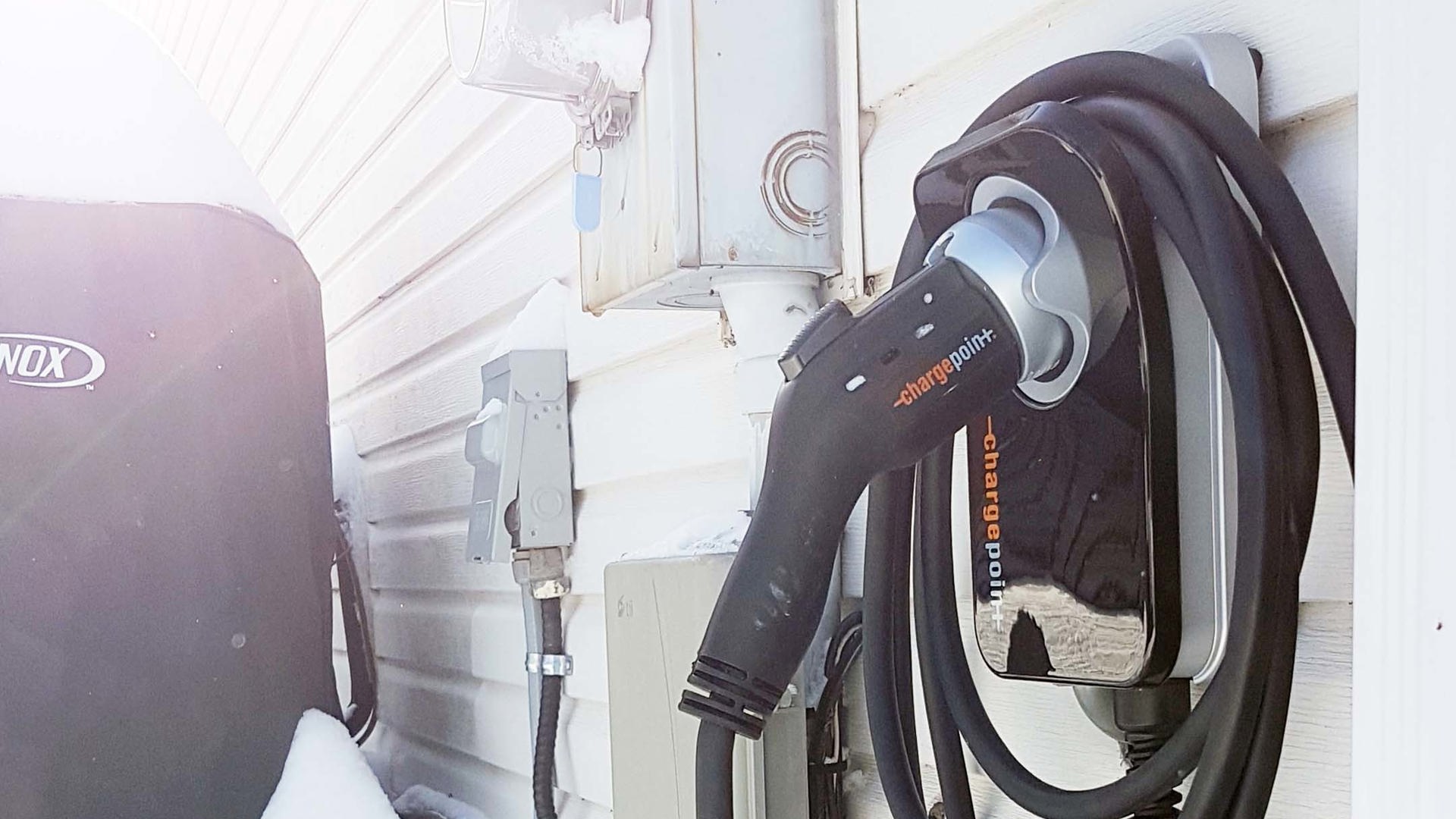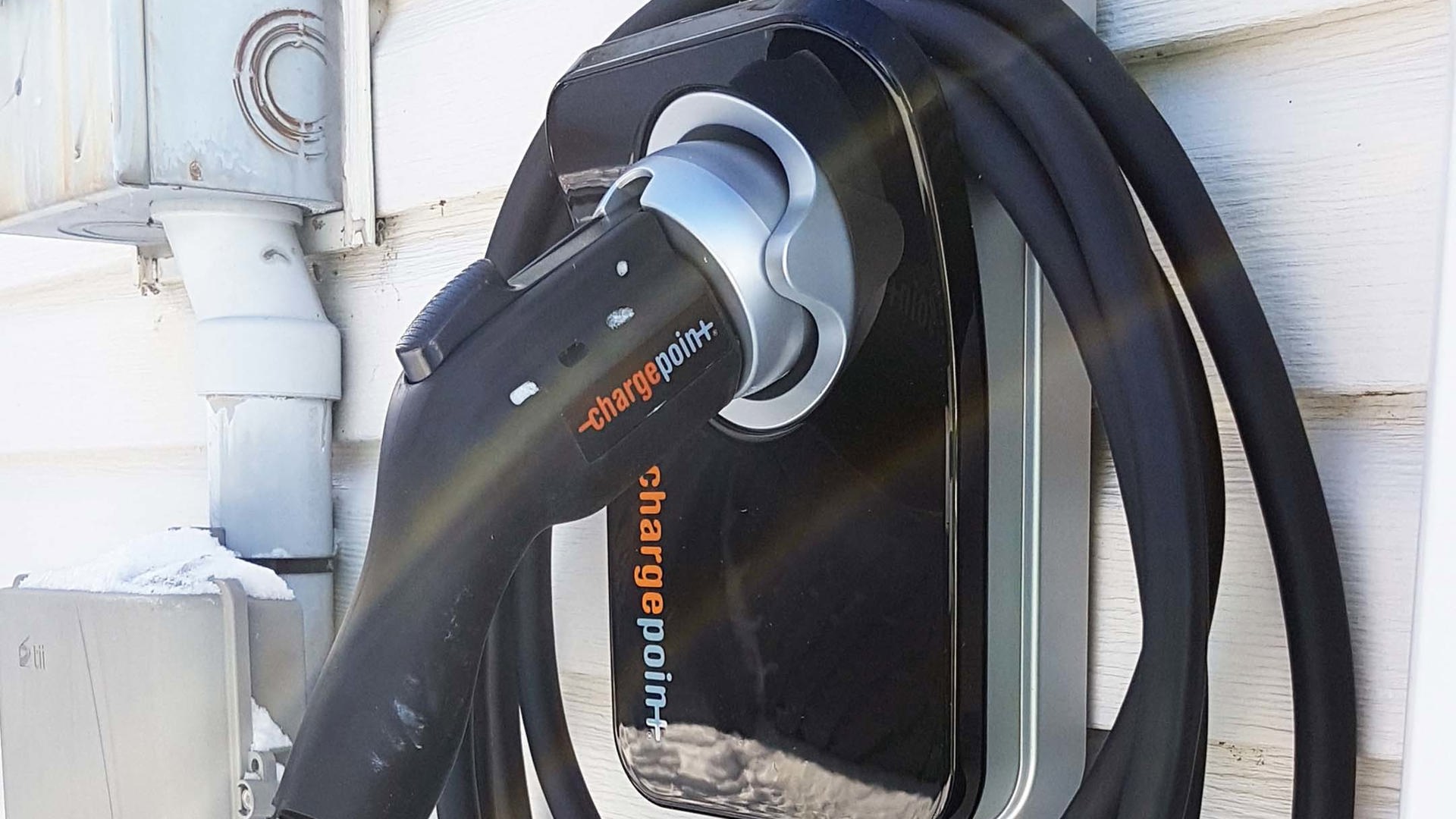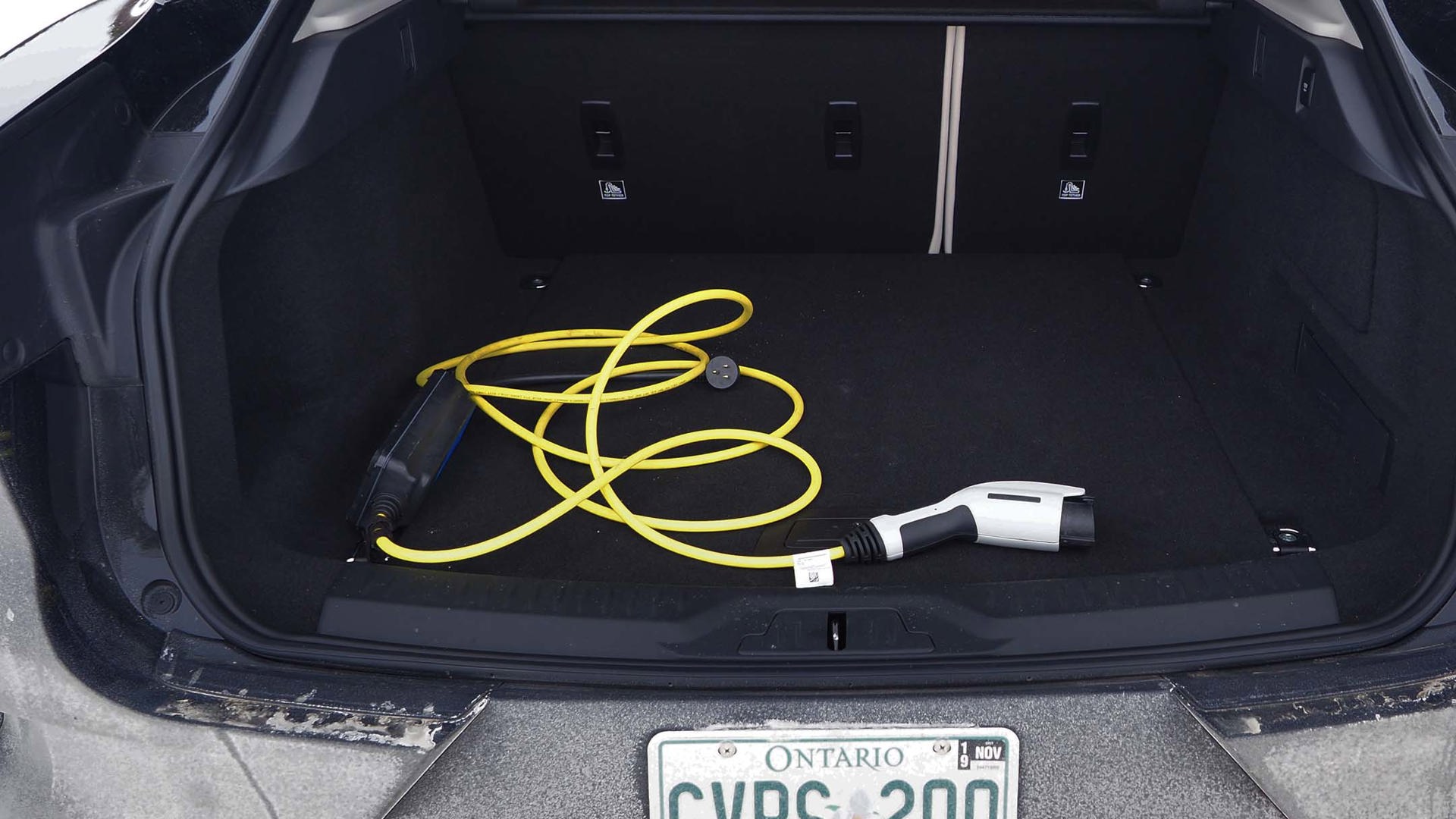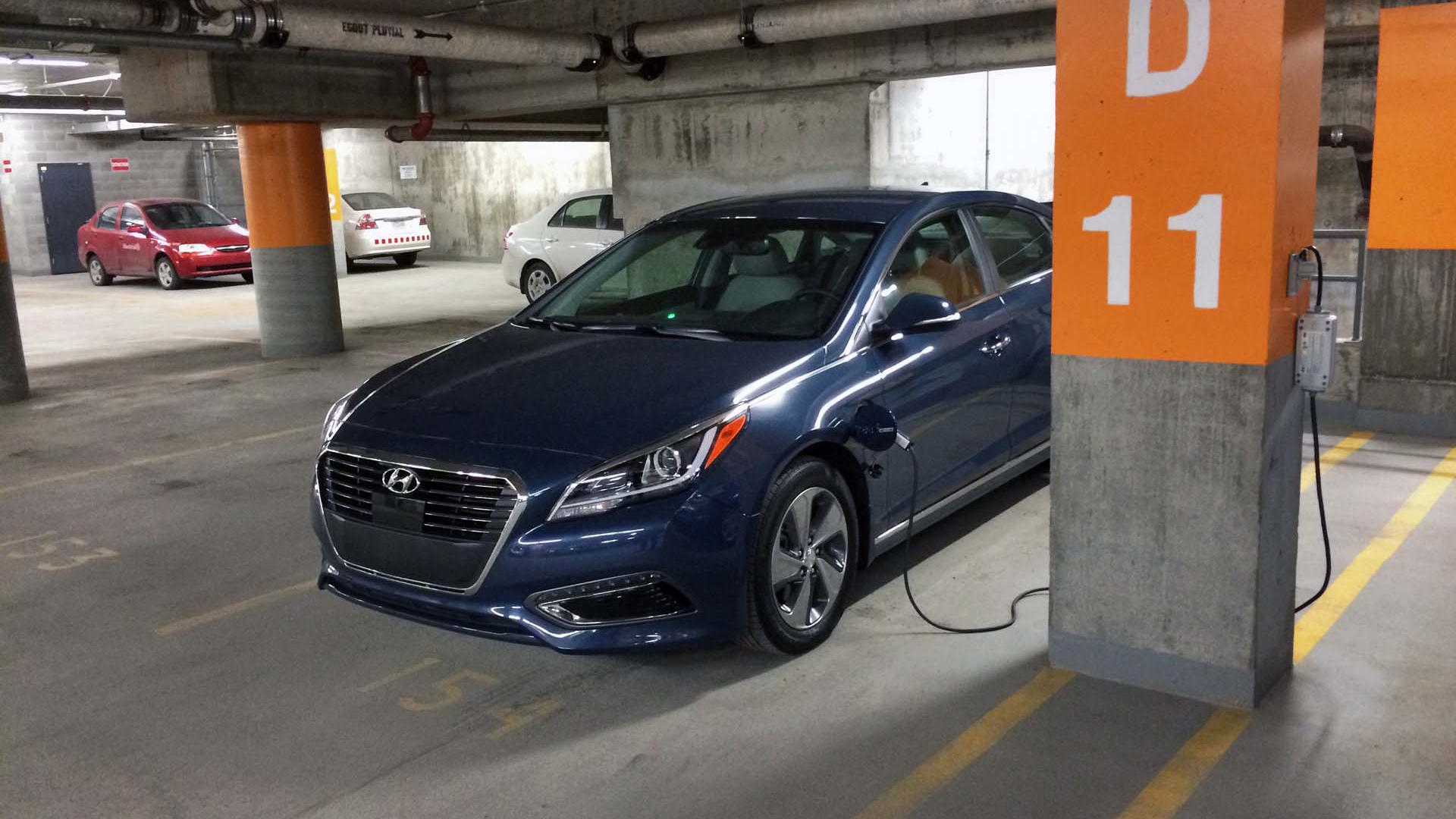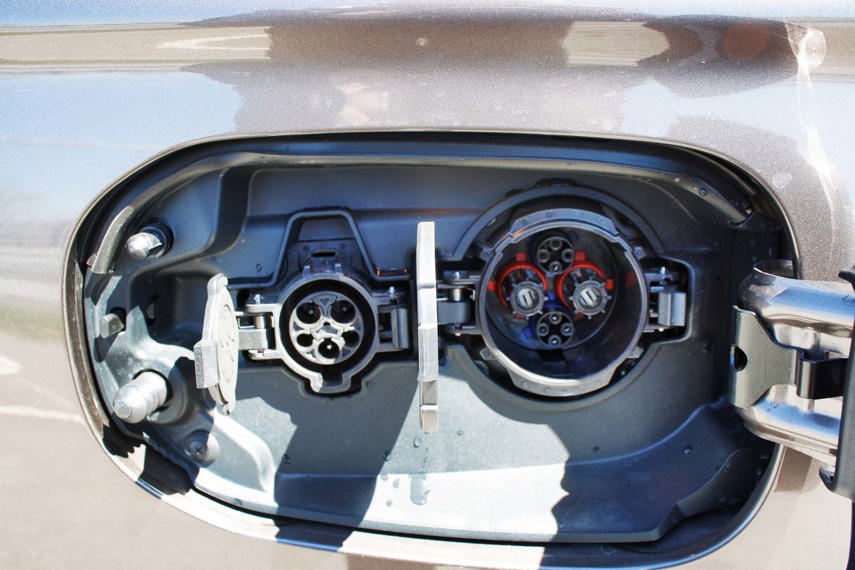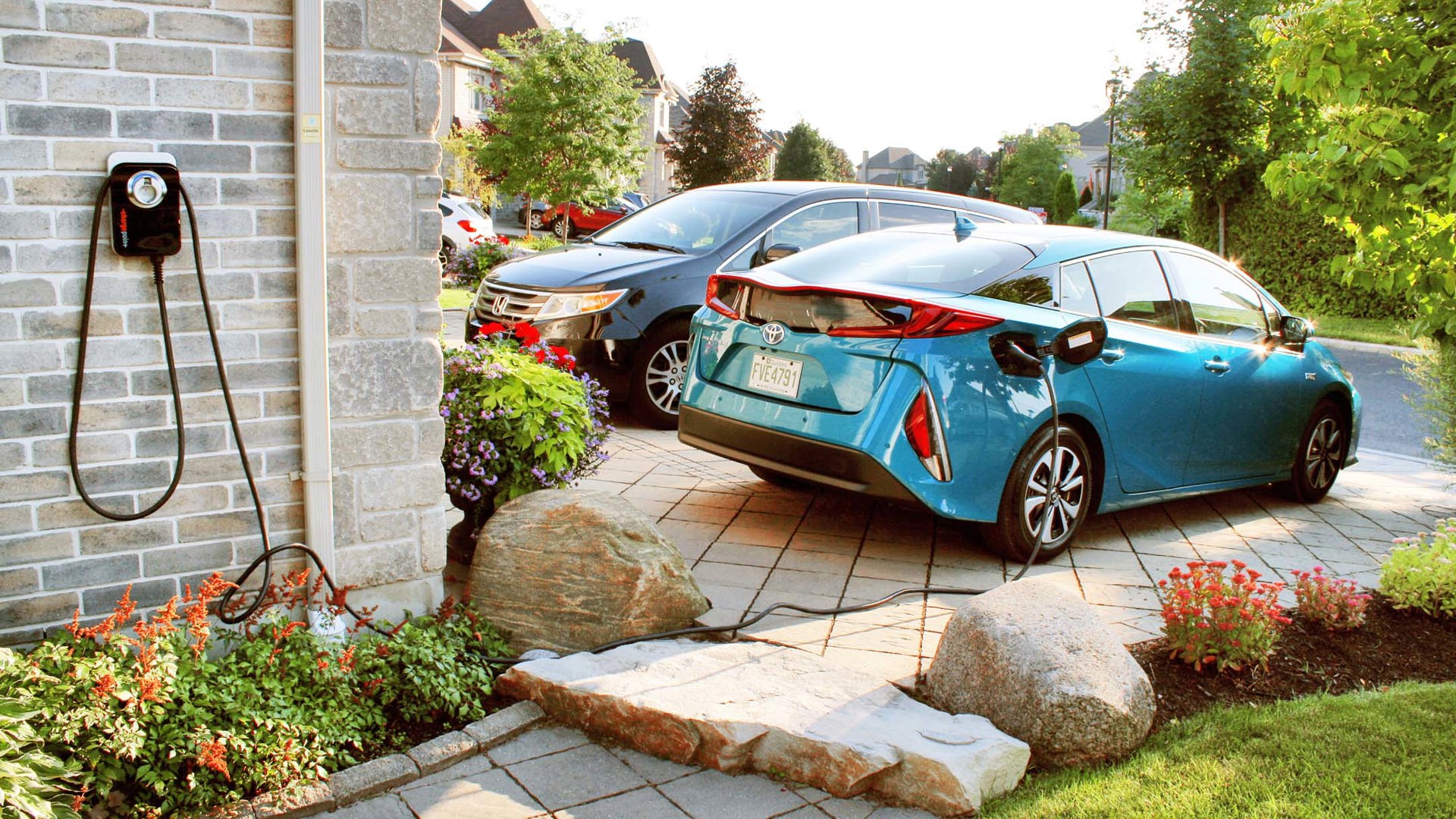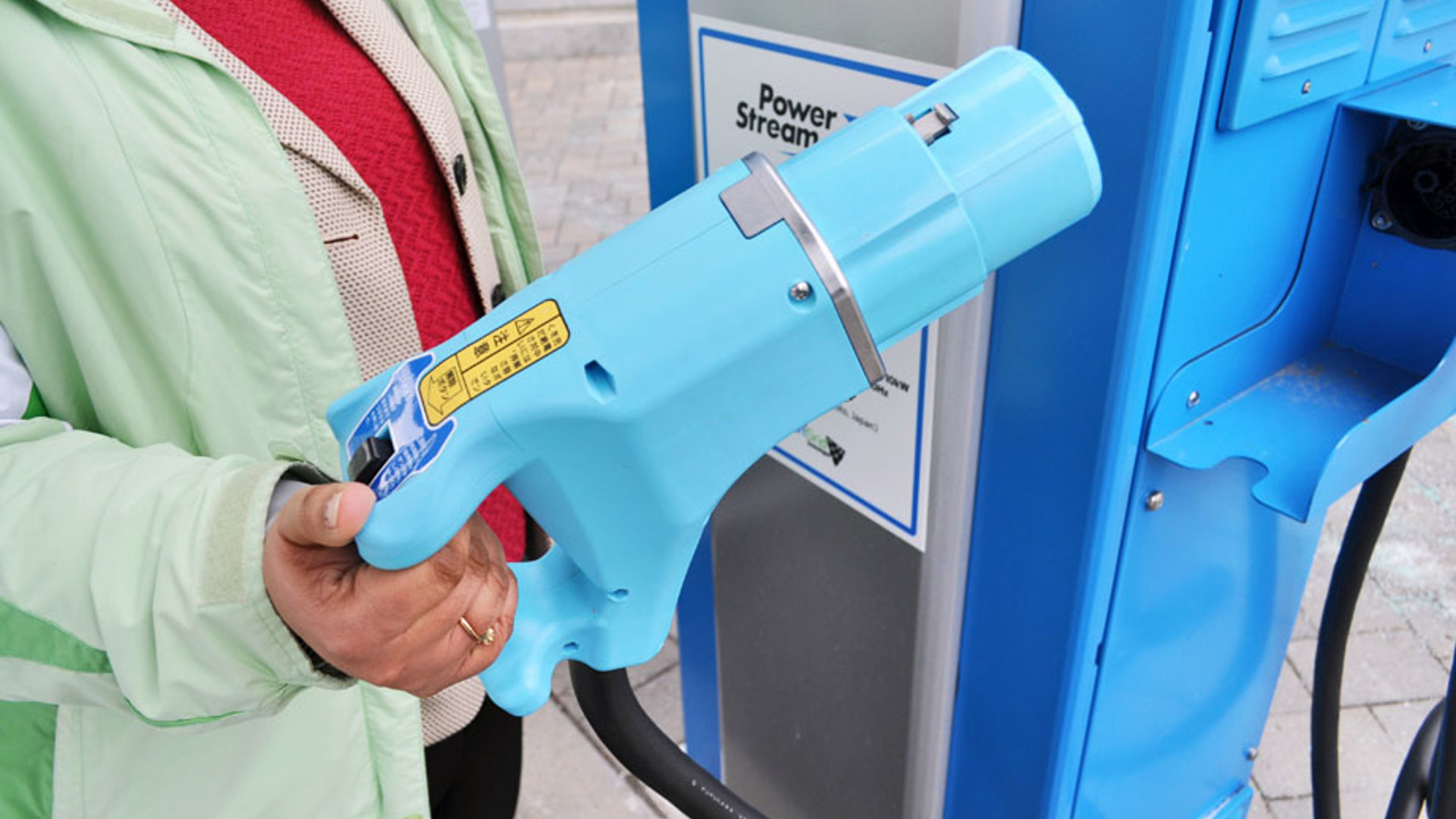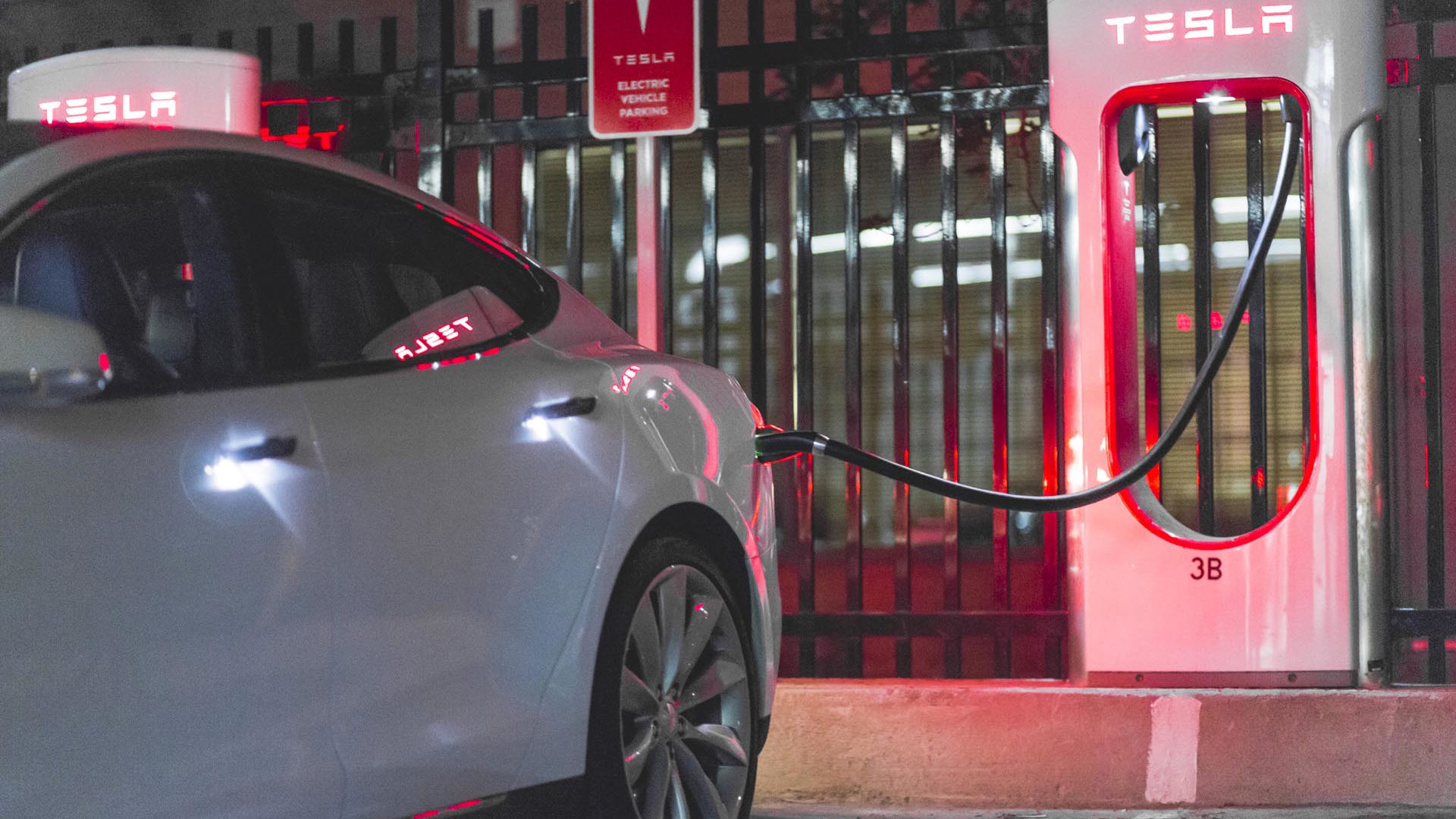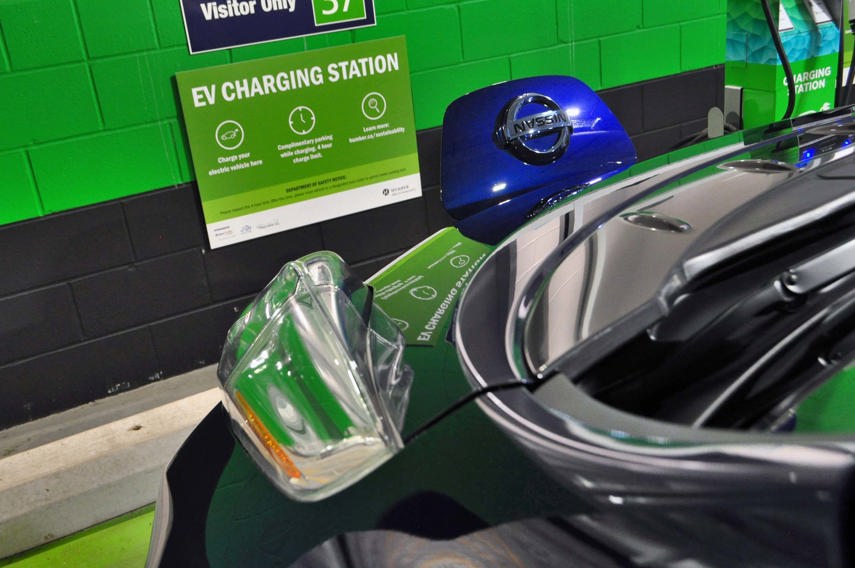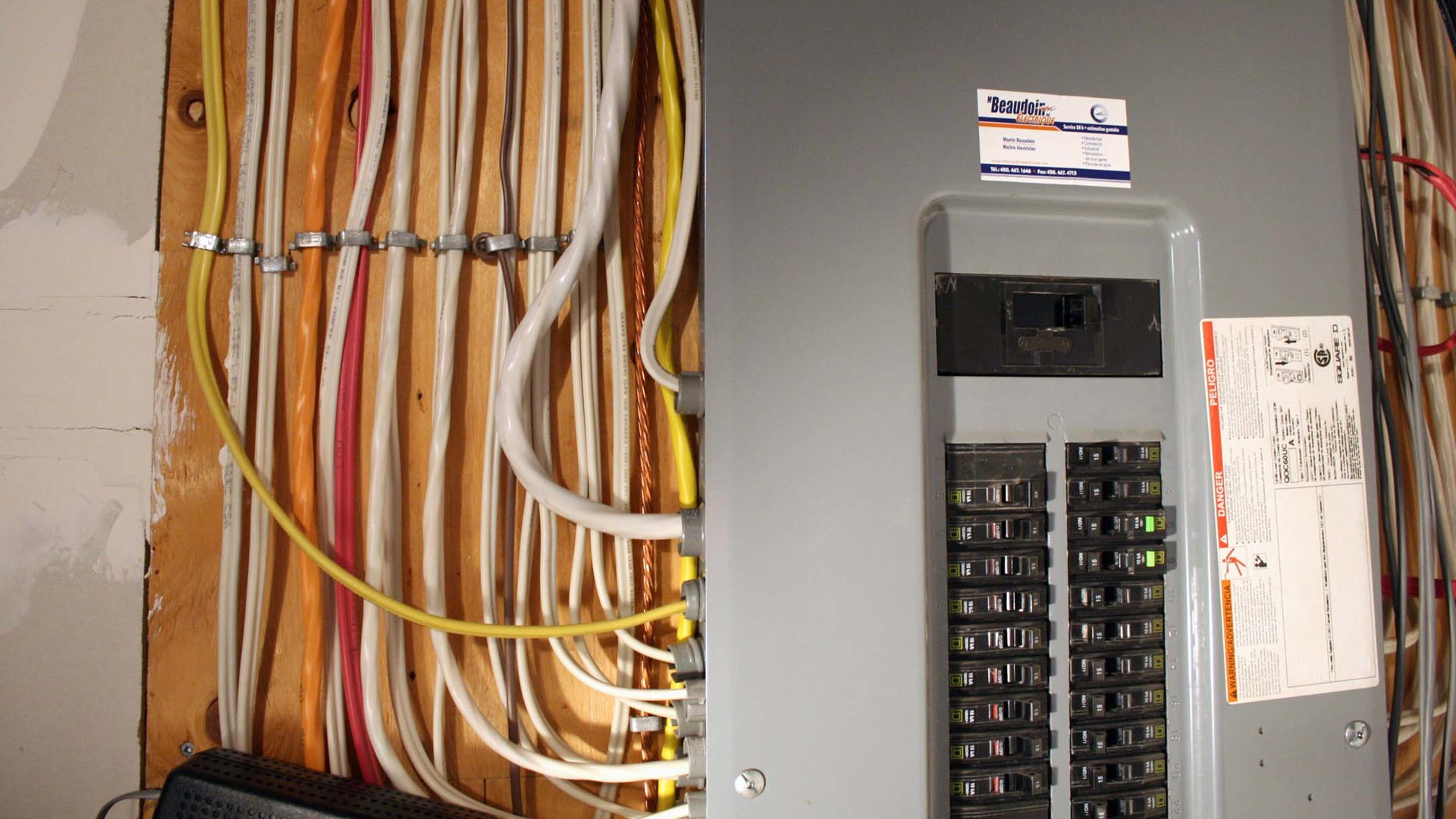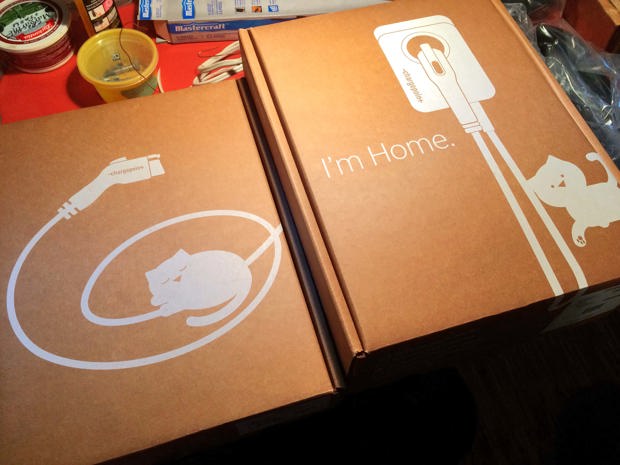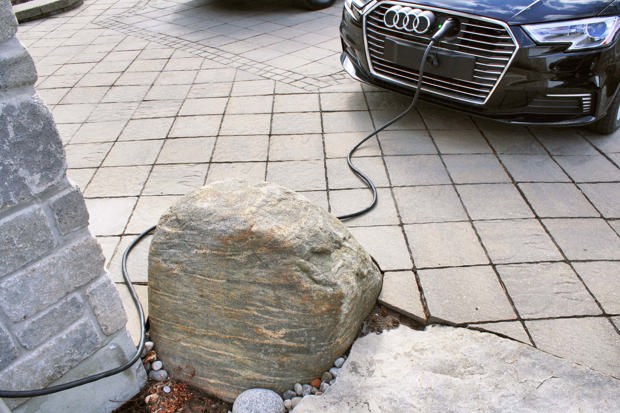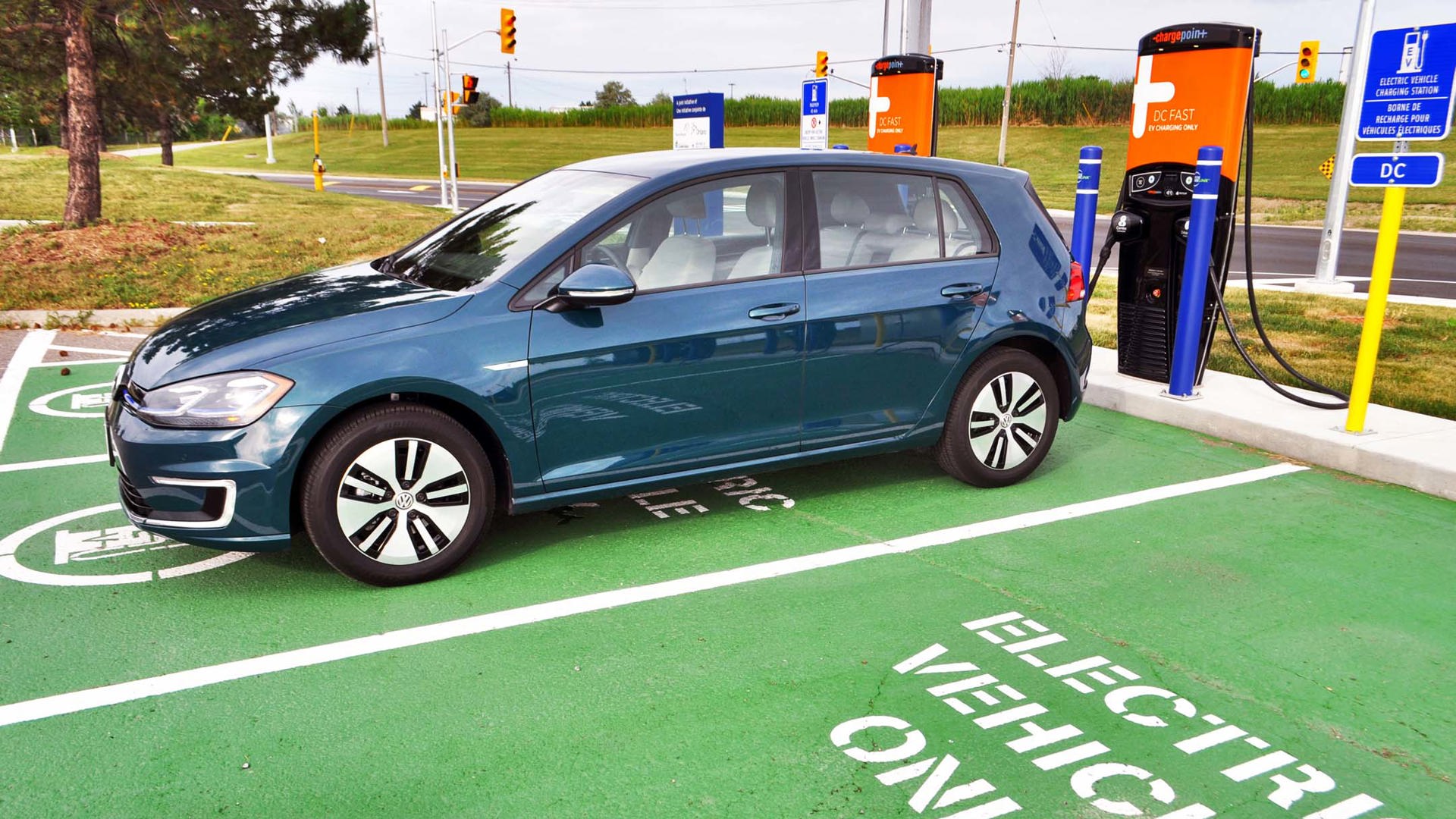More Canadians than ever are driving a vehicle that needs to be plugged in and recharged – and the trend will continue gaining momentum in the coming months and years.
In the short-term, the plug-in hybrid electric vehicle (PHEV) is forecasted to take up a growing portion of new-car sales, as more and more automakers begin to offer this fuel-saving driveline variant on more and more models. Sales of full electric vehicle (EV, or BEV for “battery electric vehicle”) models will grow in the coming years too, albeit more slowly.
In just the past month, we’ve reported on numerous upcoming models that will become electrified for the first time ever – including the BMW X3, Porsche Macan, and various models from Jeep. Many more will follow.
Below? Some information, tips and observations to prepare yourself for your first plug-in ride, with a focus on the selection, installation, and use of a home vehicle charger – after determining if you need one at all.
PHEVs and EVs and HEVs, What’s the Difference?
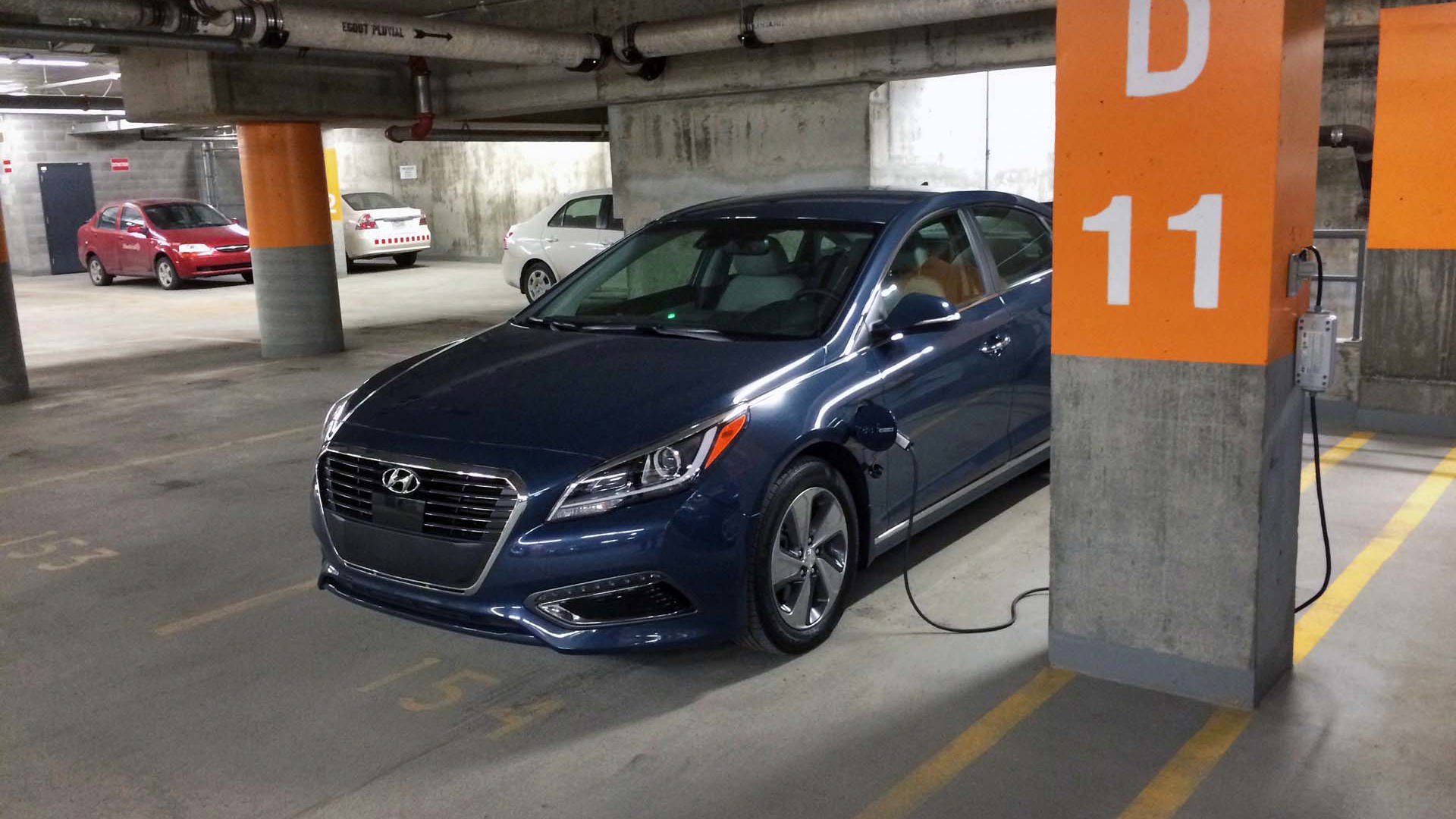
Whether a full Electric Vehicle (EV) or a PHEV, electrified vehicles like these need to be connected to a power source to recharge their ‘traction’ battery – which powers the electric motors that drive its wheels.
If you’re driving a full EV, the sole means of propulsion comes from the power stored in that battery. An EV is solely powered by electricity. There’s no gasoline to use, since there’s no engine. The EV has no fuel tank, no exhaust system, and never requires an oil change. Also, the EV has a great big battery that takes a lot of juice to recharge.
In a PHEV, charging is more optional – since this form of hybrid has a conventional gasoline engine, too.
The more you plug in, the less gasoline your PHEV will use – though driving remains possible even if you’re unable to get to a plug. The battery in a PHEV is smaller than the battery in an EV, and as a result, it can be recharged more quickly.
On a full charge, the average PHEV can deliver a few dozen kilometres of totally electric operation. Once that’s used up, the gasoline engine enables hundreds of kilometres of additional driving. So, a PHEV works like an EV for shorter distances, but can be driven farther, like a regular car, once the traction battery is depleted.
In a standard hybrid car (HEV), there’s no plugging-in required, or possible. That’s because standard HEVs have batteries that are recharged entirely by the vehicle’s driveline.
Plug-in Hybrid (PHEV) vs Standard Hybrid (HEV)

Mitsubishi builds the Outlander PHEV – a plug-in hybrid crossover that’s Canada’s most affordable PHEV utility vehicle, and a machine that counted for one in four PHEV sales in Canada last year.
Don Ulmer, Mitsubishi Canada’s Senior Manager of Product Planning, helps explain why PHEV hybrids need to be plugged in, while standard hybrids do not: “Plug-in hybrids (PHEVs) have much larger batteries than non-plug-in hybrid (HEV) vehicles, which allow them to store and use more electricity to power the vehicle. This is why you can drive the Outlander PHEV in 100 percent electric, which makes for a very efficient drive.”
The gist? While a standard hybrid may be capable of electric-only driving for very brief periods at limited speeds, the PHEV is designed to deliver electric-only driving for much longer distances, at full speed. Thing is, it needs a bigger battery to do it – and that bigger battery needs to be recharged from an external power source to make it happen.
Charging Levels
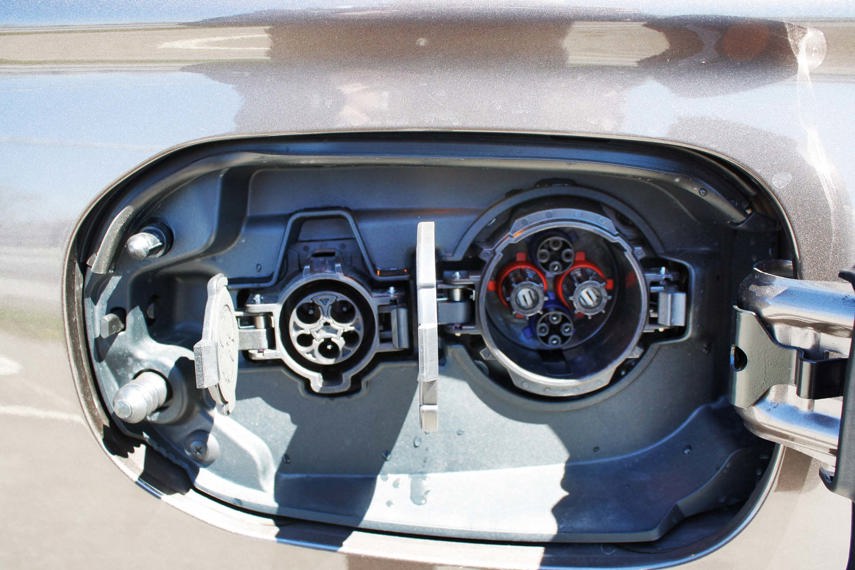
When reading about charging an EV or PHEV, you’ll encounter various charging “levels”, which correspond to the power delivered by that form of charging.
Level 1
Level 1 charging happens at the household output of 110 volts. If you plug your EV or PHEV into the same outlet you use for your Christmas lights, then you’re charging on Level 1.
Pros? Household-style 110-volt outlets are everywhere, and most PHEV vehicles include the cord and control module required for Level 1 charging at home.
Cons? Charging at Level 1 is slow, and may be prohibitively slow, for some vehicles. On Level 1 charging, many PHEV vehicles can be recharged fully overnight; a full EV, however, with its larger battery, may take a full 24-hour day – or longer – for a full charge.
Level 2
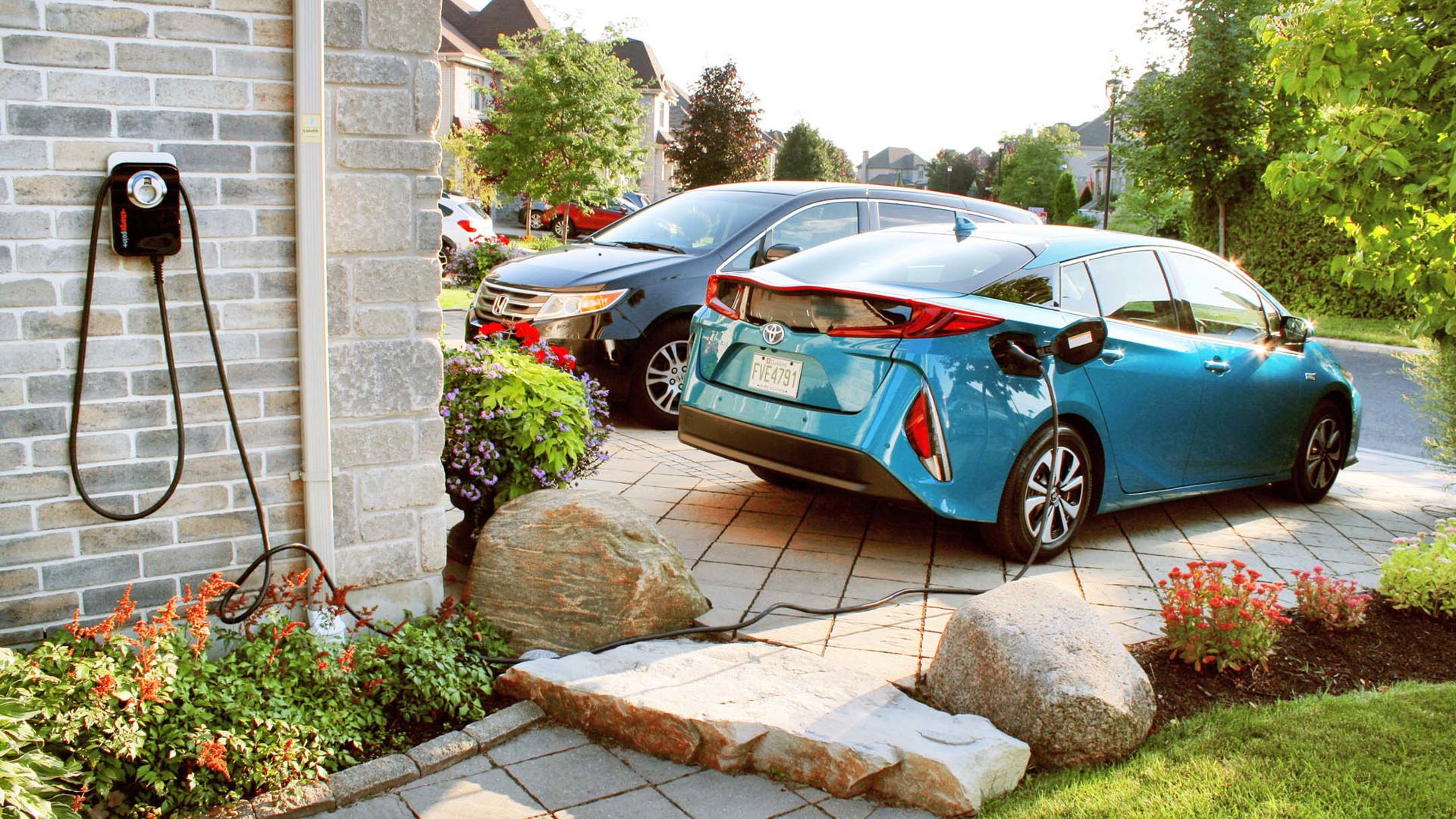
Level 2 charging happens at 240 volts. Most owners of EVs, and some owners of PHEVs, have a Level 2 charger at home. A Level 2 charger, which runs on the same output as a household oven, welder, garage heater, or electric dryer, may be ideal for the EV or PHEV driver that depletes their battery frequently, or who shares their vehicle with multiple family members.
A Level 2 can make it easier to keep your EV or PHEV fully charged, even when the vehicle is used frequently.
Pros? The Level 2 is designed for faster charging, and many options are available for residential use. Cons? Not all household wiring can accommodate a Level 2 charger, and the cost of a charger and its installation may be expensive.
Still, this is the quickest means of recharging a plug-in vehicle at home. Typically, a Level 2 charger can fully recharge a PHEV in a few quick hours, and fully recharge an EV overnight.
Many public EV/PHEV charging stations are Level 2 chargers.
Level 3
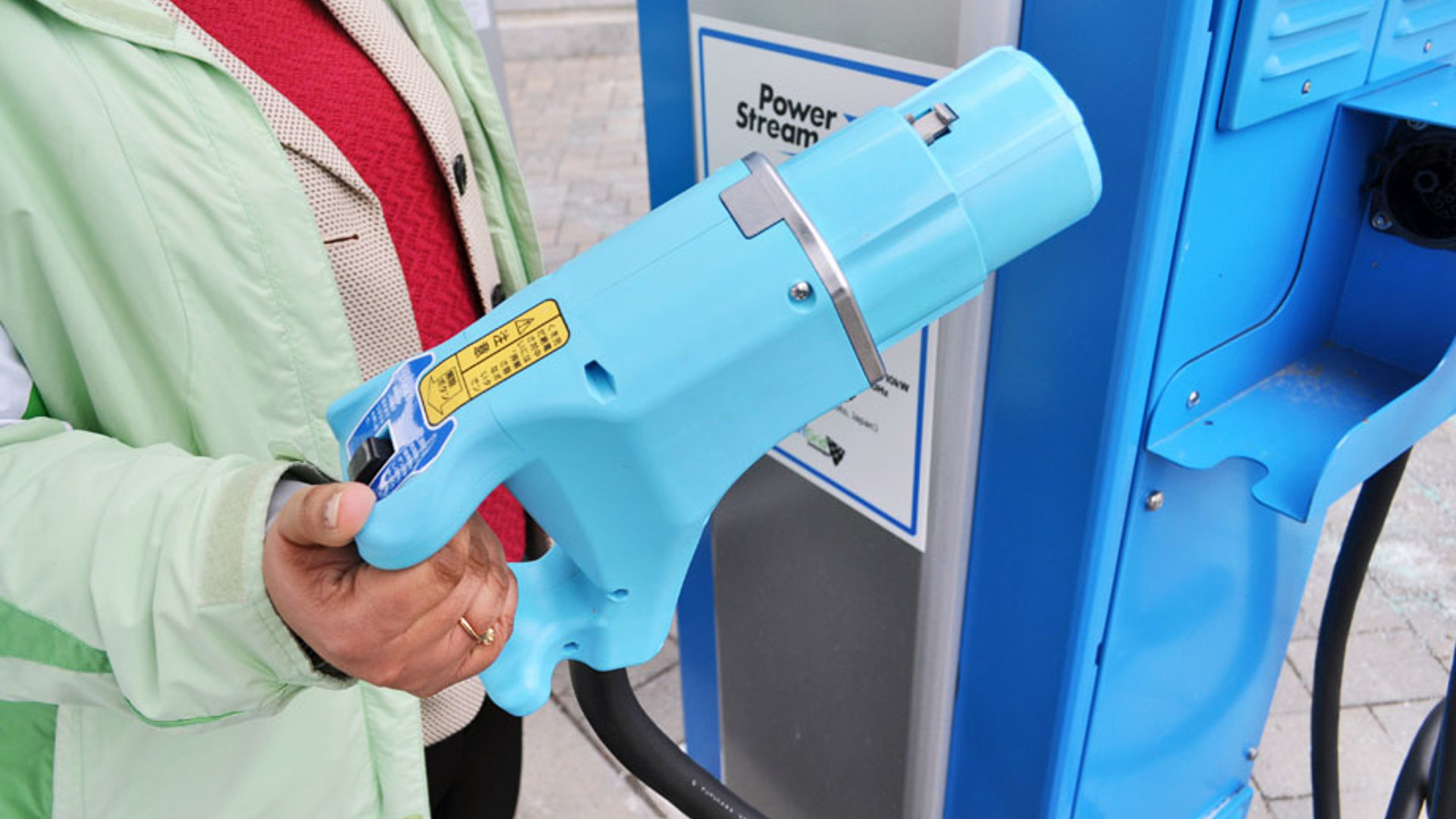
The Level 3 charger is the most powerful charger of them all. Level 3 chargers use nearly 500 volts to quickly recharge even the biggest batteries. Most Level 3 chargers can fill an EV battery in under 90 minutes, or add hundreds of kilometres of range in just an hour or so.
Level 3 charging also makes quick work of filling the smaller battery in a PHEV vehicle, though PHEV models compatible with Level 3 charging are rare.
The Level 3 charger is a powerful way to recharge – though they’re too big and powerful for at-home use. Note that not all plug-in vehicles (PHEV or EV) can be recharged at Level 3.
In the case of the Outlander PHEV we’ll reference in this story? “Outlander PHEV can be charged at home with a Level 1 charger overnight, or with a Level 2 charger in just over three hours,” Ulmer says. “It is also currently the only plug-in hybrid in Canada to offer quick-charging, which allows you to charge the vehicle to 80 percent in less than a half hour.”
Tesla Supercharger Stations
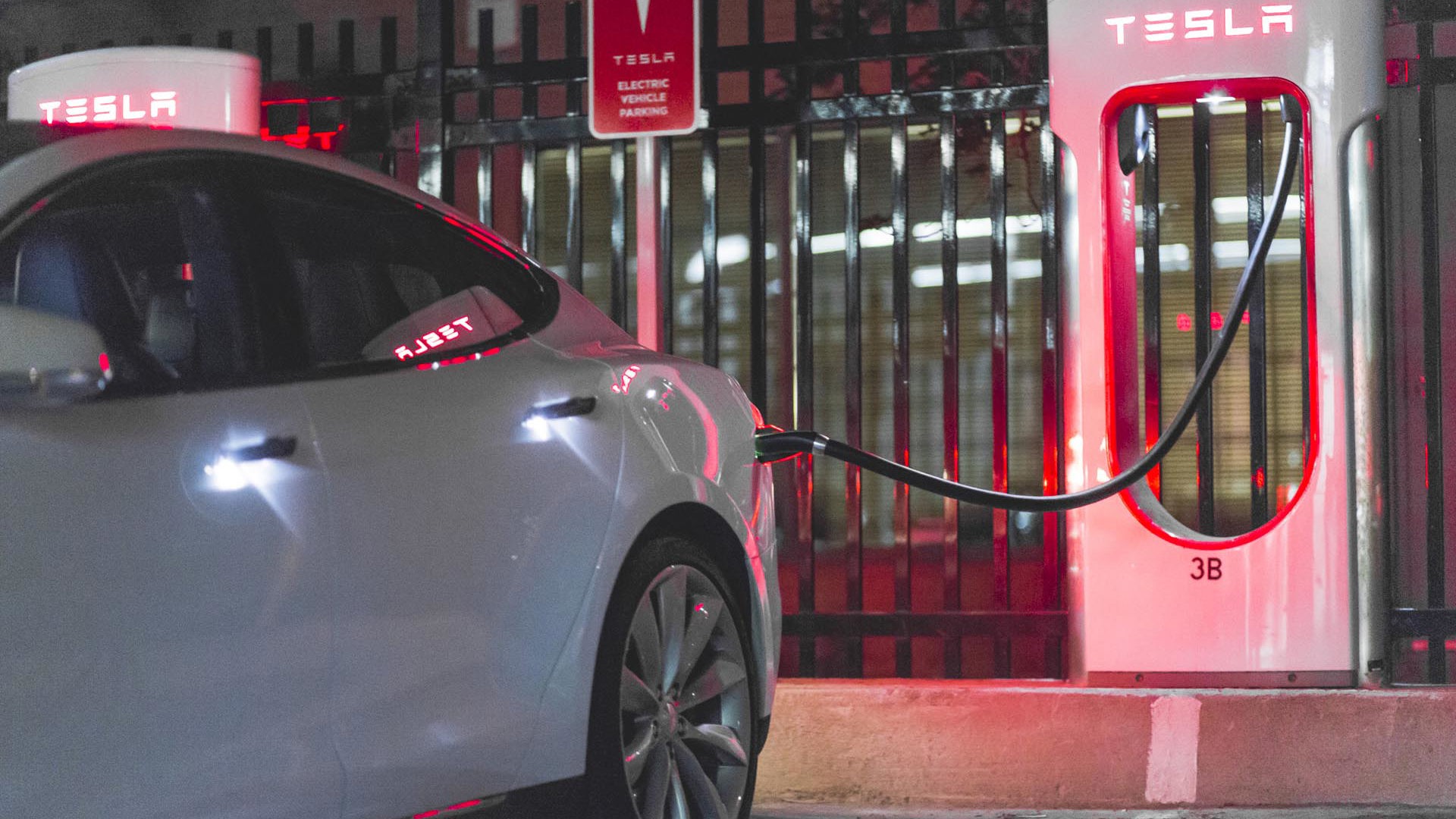
You may have noticed the recent installation of a Tesla Supercharger station in your locale.
They’ve even installed one where I live, in Sudbury, Ontario, at a local shopping centre. The highway connecting Sudbury to Toronto (the closest major city) has limited charging infrastructure along the route, other than numerous Tesla Supercharger stations.
Note that Tesla Supercharger stations can only be used by Tesla cars. If you drive an EV or PHEV made by another manufacturer, you won’t be able to charge at a Tesla Supercharger station.
A Level 2 Tesla home charger can be used, with an adapter, to charge virtually any other plug-in car – but that’s not the case with public Tesla Supercharger stations.
What Charger Do You Need for your EV or PHEV?
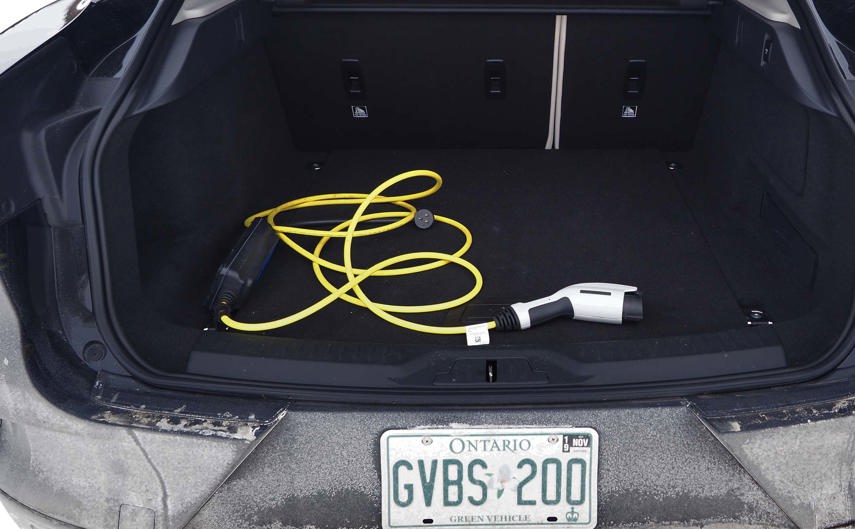
There’s no single answer to this question that works for everyone, in every situation, every time – and the variables between vehicles, lifestyles, local charging infrastructure, and driving habits are numerous.
Here are some general considerations:
If you have the means, a Level 2 charger, installed at home, is probably a good idea. However, if you’re able to charge at Level 1 for an extended period between drives, and/or if there’s enough nearby charging infrastructure in your locale, it may be overkill.
Some EV drivers even do just fine with slower, Level 1 charging at home.
One owner I spoke to drives a Nissan Leaf, and uses it exclusively to go to and from work. He charges overnight on Level 1, recharges at work all day, drives home, and charges overnight once again. His battery rarely gets “full”, though he’s always got enough range for his daily commute.
Consider this alternative against the range and recharging time of your own EV or PHEV, as well as your daily driving habits.
If you drive an EV that will be used more frequently, and for longer distances, this may not be a suitable setup. Note that in extreme cold, charging at Level 1 may be extremely slow, and that cabin pre-conditioning (where the vehicle is pre-heated using grid power) may not be possible.
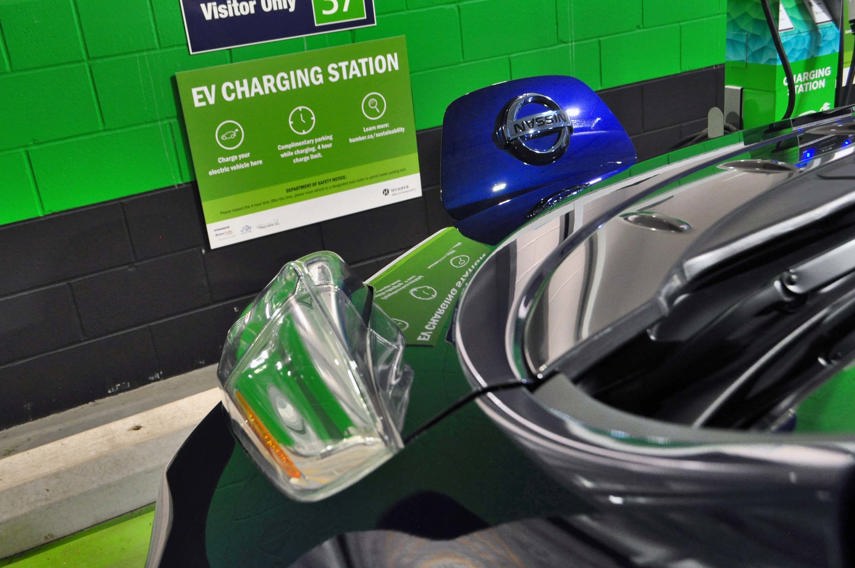
Many PHEV drivers do just fine with Level 1 charging, especially when the vehicle is typically parked for many hours a day. Other PHEV drivers prefer to use a Level 2 charger to help ensure their traction battery is fuller, more of the time – thereby maximizing fuel savings.
Many other situations are possible, so consider your specific situation and vehicle when making a decision.
No Need to “Fill It Up”
You needn’t fully charge the battery in your EV or PHEV every time you plug it in. Often, taking “sips” of electricity here and there is enough to keep you moving throughout your day or week, until you’re able to recharge fully – perhaps while parked at a public Level 3 charger while eating lunch, or on a Level 2 charger while you’re away shopping for several hours, or on a household Level 2 charger overnight.
The EV and PHEV can accurately predict the range they’re able to drive on a given amount of charge. This helps drivers plan on when to charge, and for how long.
Cost to Install a Level 2 Charger at Home
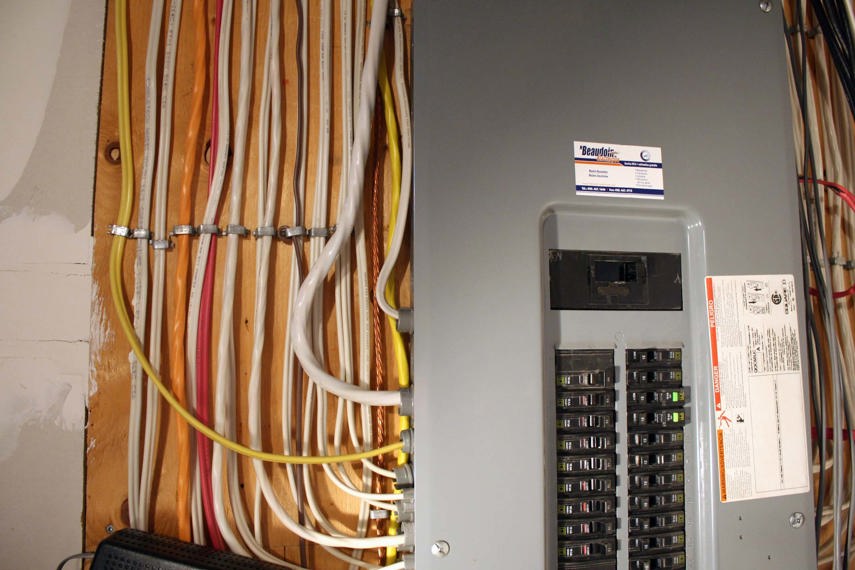
Many variables affect the cost of having a Level 2 charger installed at home. The average price for a household Level 2 charger typically falls between $700–$1,200; the installation cost is varies greatly, depending on many factors.
In some cases, modifications to your home, property, or electrical service may be required to install a charger. Some installations are easy, while others require digging, burying of expensive electrical cables, and more.
In general, and provided your household electrical panel is compatible, the installation of a Level 2 charger will be less expensive the closer it can be located to your home’s fuse panel.
I recently had a Level 2 charger installed at home, and my experience reflects some great luck from a pricing perspective.
After purchasing a Level 2 charger during a Black Friday sale, an electrician and family friend provided an estimate for installation. My fuse panel was compatible, and located just four feet away from the ideal installation location, on the exterior wall of my garage, two steps from my driveway.
This meant that installation required minimal labour and materials. The electrician made the appropriate checks and connections, ran the cabling outside through the garage wall, mounted the charger to the side of the house, and completed the connections. In my case, the charger cost $700 (shipped, tax included), and the installation was an additional $300, for parts and labour.
This is an example of a fairly low-cost install, and ran me $1,000. Your results may vary.
Advanced Home Charger Features
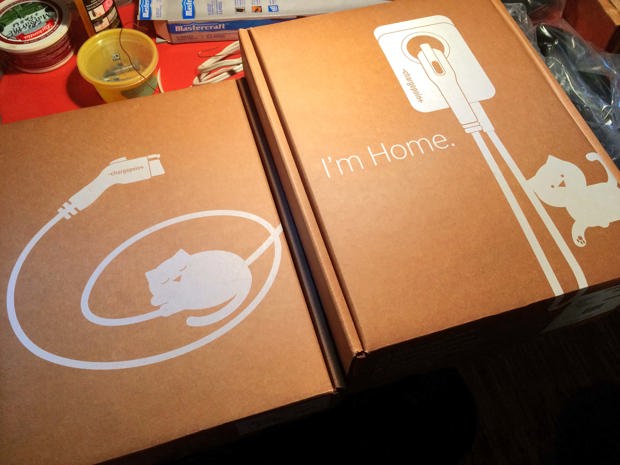
At present, most home EV charger brands offer up some advanced functionalities that shoppers may wish to consider.
Generally, the major up-sell represents moving from a standard charger to one that can be turned on and off remotely – usually from a smartphone app, via a smart home device such as Amazon Alexa, or via a built-in timer. This helps owners to recharge during off-peak hours as often as possible, to help save money.
Other enhancements may include a built-in indicator light, which makes the charger easier to see and use in the dark, extended-length cables, and built-in cable management provisions.
Other Considerations When Selecting a Charger
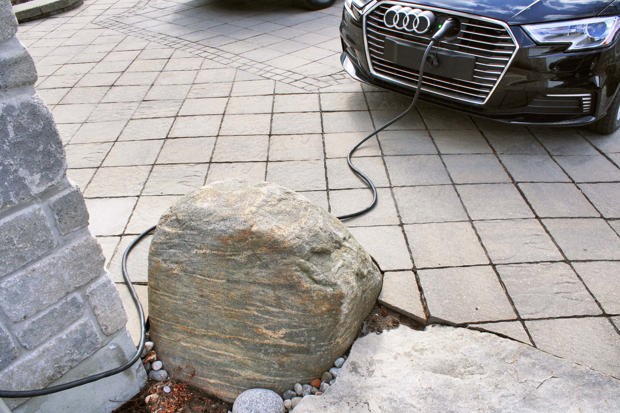
Remember to assess the install location of your Level 2 charger while bearing the length of its charging cable in mind. Install in a location that allows plenty of extra slack in the cable for flexibility; and be sure you’ll be able to charge your EV or PHEV from any spot in a multi-car driveway, if applicable. Make sure you’ll be able to recharge whether you’ve pulled straight into your driveway, or backed into it, too – depending on the vehicle you choose, the charging port may be located on the side, or at the front or rear.
Some charger units are available with multiple cable lengths (with a corresponding increase in price between each). If that’s the case for the unit you’re considering, be sure to select the appropriate cable length.
Some EV chargers are designed for outdoor use, and others are not. If you’ll charge inside of a garage, you don’t need a waterproof outdoor charger, which may save you some money.
If your garage has a NEMA-style plug (commonly used for stoves, heaters, and dryers), various plug-and-play Level 2 chargers are available to plug into that outlet – though you’ll want to have an electrician confirm compatibility before you buy.
If you’ll be moving in the coming years, determine if and how your charger may be removed and reinstalled. Ask the electrician, or the charger’s manufacturer, for the scoop.
Finally, while performance of various Level 2 chargers are highly comparable, some models can capitalize on higher amperage electrical service, and may be able to charge your battery even faster. Determine if the charger you’re considering is available in configurations that support numerous amperage ratings, and ask your installing electrician which one will be best for your application.
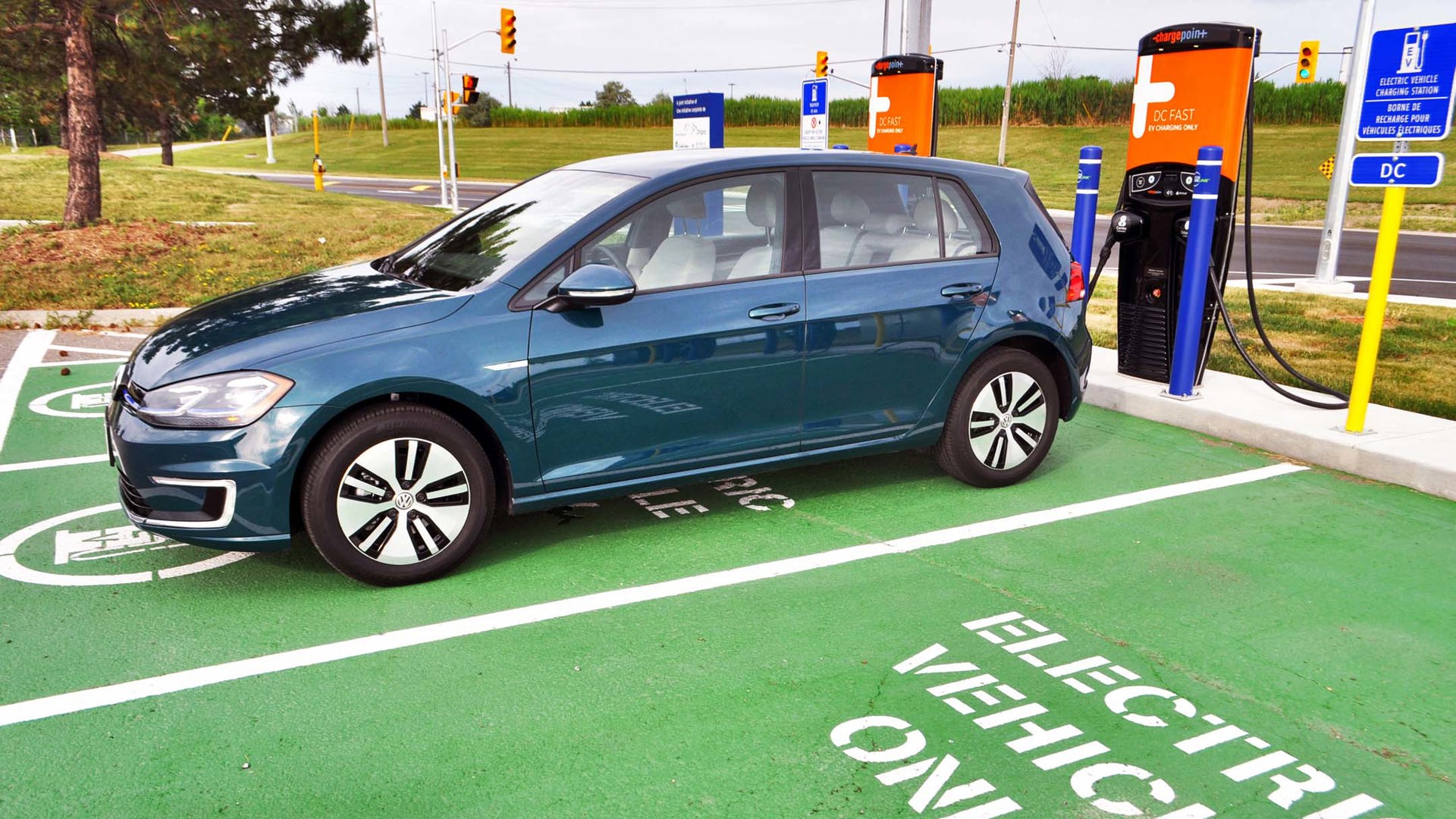
Incentives and Rebates
Depending on where you live, and the products you select, government rebates may be available to help offset the cost of a home EV charging station. Some provinces have incentive programs, and others don’t.
Currently, BC and Quebec offer incentives for EV charger shoppers. Some cities offer their own incentives, too. Typically, government incentives can help reduce the price of a home EV charger by a few hundred dollars.
To find more details about any incentives available where you live, you can check ChargeHub and Plug’n Drive. Check back often to stay on top of any changes or newly available incentives in your area.
